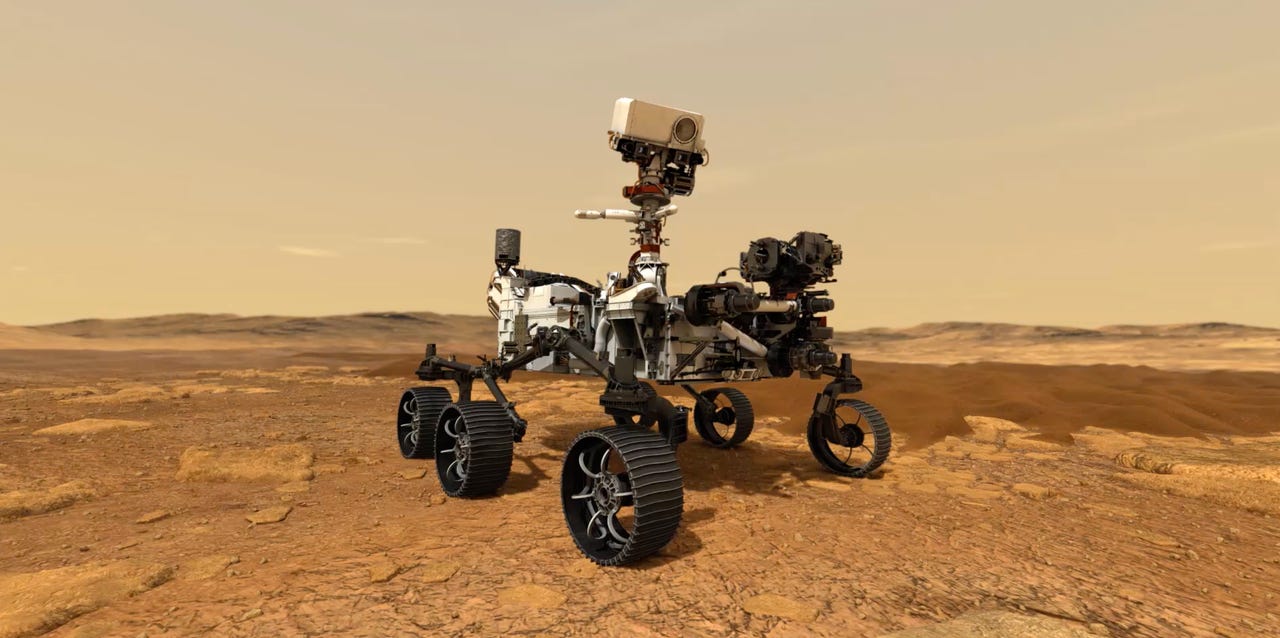































 Image: NASA/JPL-Caltech
Image: NASA/JPL-Caltech When the moon comes out, for most workers on Earth, this means it's officially time to unwind, rest, get some sleep, and mentally prepare for the next workday. However, when Mars' two moons come out, one very hard worker still has business to do on the Red Planet -the Perseverance rover.
The cute little Mars rover works all day and night to collect and send back data to Earth about its Mars findings. Perseverance does most of its activities during the daytime because the light facilitates taking images and using auto-navigation, according to a NASA blog post.
When it gets dark on Mars, temperatures drop much like on Earth, making it necessary for Perseverance to use more power to stay warm, which means less power to do other things. Yet, Perseverance turns out to be a resilient night worker, doing more at night than some might do during the entire day.
Also:Debris from NASA's Mars landings is still creating little mysteries on the Red Planet
One of the rover's night-shift roles is serving as a photographer. After getting in position, the mast-mounted camera system called Mastcam-Z takes photographs of Phobos, one of Mars' moons. These photographs provide a measurement of the amount of dust in the nighttime atmosphere which can be compared with similar measurements made by looking at the Sun during daytime.
Image taken by Perseverance of Phobos, one of Mars' two moons.
Image: NASA/JPL-Caltech/ASUOvernight, Perseverance continues to collect weather data through the Mars Environmental Dynamics Analyzer (MEDA). This weather data includes observations about turbulence, winds, water vapor, and changes in dust and water ice in the atmosphere. In addition, the Supercam microphone makes three-minute sound recordings that tell researchers about small-scale atmospheric turbulence.
The Mars Oxygen In-Situ Resource Utilization Experiment (MOXIE) schedules its oxygen generation at night because air temperatures are the lowest and densest then, which yields the most accurate reading.
Also: Perseverance grabs its 12th sample of Mars
Lastly, the Scanning Habitable Environments with Raman & Luminescence for Organics & Chemicals (SHERLOC) instrument operates at night because it provides the most sensitive detections then. SHERLOC uses cameras, spectrometers, and a laser to look for signs of past microbial life.
 Tags quentes :
Inovação
Espaço
Tags quentes :
Inovação
Espaço